50 Words or Less
The ARETERA EC1 shafts have a very active, smooth feel with much more stability than you would expect. EC1 Gray is stiffer than EC1 Blue. Both are mid launch and spin.

Introduction
Last year, the golf industry got its first look at ARETERA shafts. Some legal issues made that more of a sneak peek than a traditional debut, but the company is back for 2025 with a new pair of shafts. The ARETERA EC1 shafts, powered by a unique design and premium materials, offer players a combination of feel and stability that stands apart from almost anything else on the market.

Looks
With its silver base color, no one will accuse the ARETERA EC1 of putting style over substance. This is a shaft that looks like it wants to get down to business.

Below the grip, a light geometric design wraps around the shaft. This is one of two spots where you can distinguish the Blue from the Gray – the lowest part of the graphic is done in the appropriate color. There is ARETERA branding on both the top and bottom of the shaft, so the “logo down” installation isn’t blank, just less busy.
On the “logo up” side, there is a series of bars indicating the shaft’s stiffness in the butt, mid, and tip sections. This is the other way to tell the EC1 Gray from the EC1 Blue. Finally, at the tip, the silver finish fades away, revealing an “inside” look at the graphite beneath a “CONTROL CENTR” graphic.

Feel
Both the EC1 Gray and EC1 Blue shafts are stiffer in the butt and tip sections, softer in the middle. This sounds like a recipe for a hinged feeling, but that’s not what I got. Like the Alpha One [review HERE], the ARETERA EC1 has a long, smooth kick that travels down the entire length of the shaft.

What makes the EC1 unique is that it blends this big, lively feel with excellent stability. I never had any question of where the shaft was or what the club head was doing during the swing. While I’ve described other shafts as “active yet stable,” ARETERA dials it up to a level all their own.
Comparing these two shafts, the EC1 Gray is 7% stiffer in the tip than the EC1 Blue, per ARETERA. I found that 7% to be quite noticeable, but the two shafts are still much more similar than they are different. It’s like comparing dark and milk chocolate, not chocolate against vanilla.

Performance
The tech talk around shafts is normally unintelligible to anyone outside the industry because the jargon is so dense. However, I found the tech story behind the ARETERA EC1 shafts not only easy to understand but quite compelling.
There are two big things that make the EC1 unique, both related to the plies or layers of material that make up the shaft. First is the quantity. Per ARETERA, the EC1 has about 20 plies where a standard shaft has 5-7. Additionally, most shafts have their inner layers of plies set down at a 45 degree angle and the outer layers at 0 degrees. The EC1 shafts alternate – one layer at 45, one at 0 – which is what creates its unique feel and performance while also necessitating a manufacturing time four times longer than conventional shafts.

If all that made your eyes glaze over, you can wake up now, I’m getting back to what the golf ball did. For me, the ARETERA EC1 Gray was outstanding from the first swing. I got the exciting, smooth feel, but I didn’t need to hold back on my swing. The ball launched on a mid trajectory with mid-low spin and barely curved. There was a stability to the ball flight that made me confident to tee up another one and let it rip. With the EC1 Gray, I also felt like I had access to everything from a running draw to a high, soft cut.

Switching to the ARETERA EC1 Blue, I got the message that I needed to dial back the aggression. The shaft never felt super loose or “lost,” but when I forced the issue, the dispersion shifted hard left. My better, in-tempo swings produced more draws than anything else, but they were very playable. For the golfer than wants to let the shaft do more of the work or wants to shift their shot pattern a little left, the EC1 Blue is a great choice.

Both the ARETERA EC1 Blue and EC1 Gray are offered in 45, 55, 65, and 75 gram weight classes, but the flexes offered at each weight vary. ARETERA EC1 Blue is comes in flexes 2, 3, and 4 at 45 grams and 2, 3, 4, and 5 at 55 grams. They offer flexes 3, 4, 5, and 6 at 65 grams and 4, 5, and 6 at 75 grams. The ARETERA EC1 Grey comes in 3 and 4 at 45 grams and 3, 4, and 5 at 55 grams. Flexes 4, 5, and 6 are all available at 65 and 75 grams.
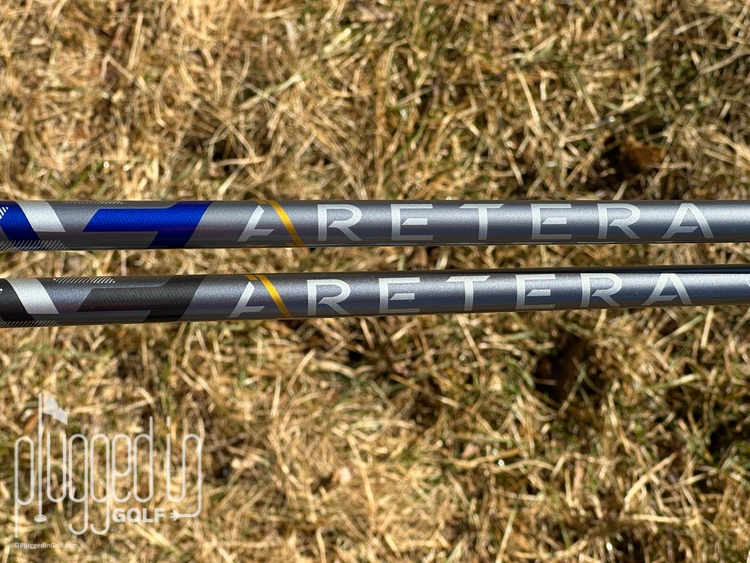
Conclusion
If you’re in the market for a new driver this season – or trying to inject some fresh life into an old favorite – give the ARETERA EC1 shafts a chance. These shafts push the limits of stability and consistency while still offering a lively, active feel during the swing.
Visit ARETERA HERE
He founded Plugged In Golf in 2013 with the goal of helping all golfers play better and enjoy the game more.
Matt lives in the northwest suburbs of Chicago with his wife and two daughters.
- Callaway Elyte Hybrid Review - June 3, 2025
- TaylorMade R7 Quad Mini Driver Review - June 2, 2025
- Newton Fast Motion Shaft Review - May 30, 2025



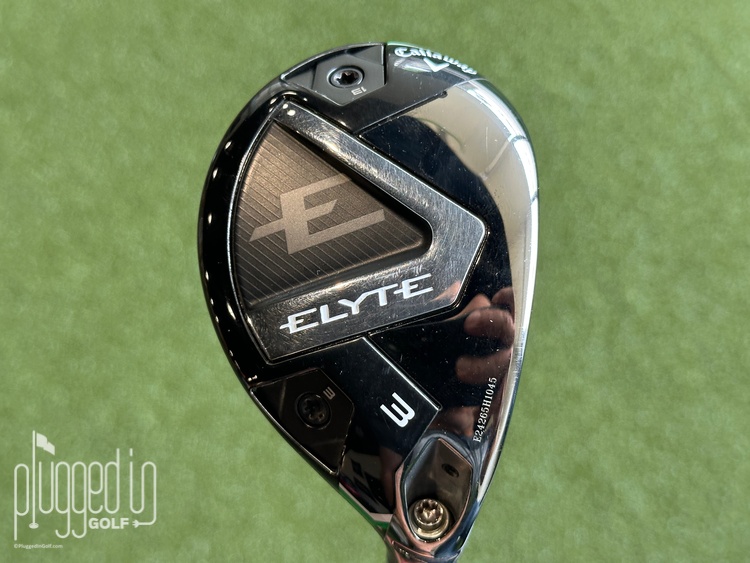
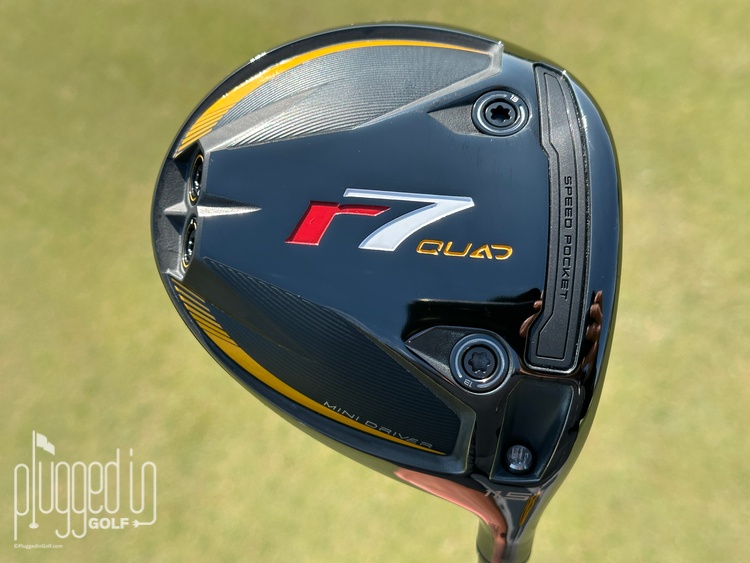
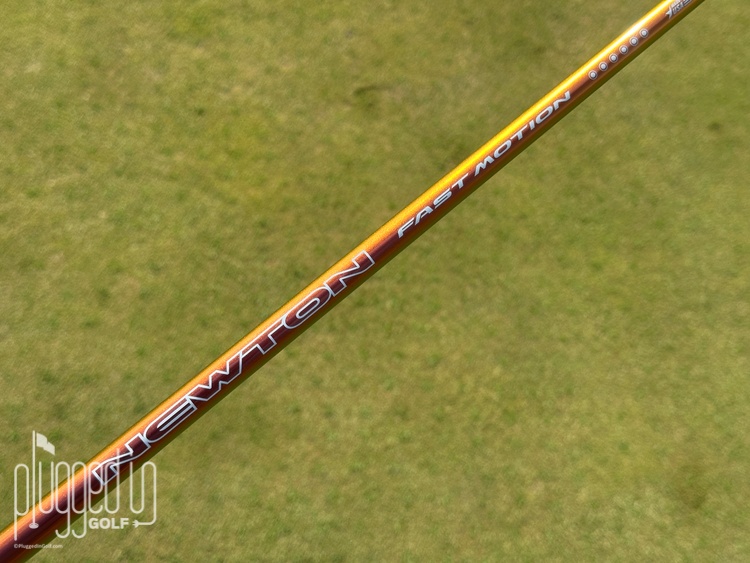


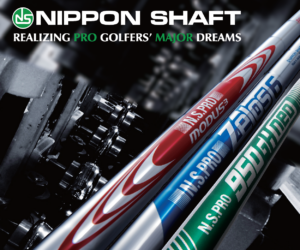







20 Comments
Wow the blue seems to be REALLY low spin for such an active shaft. Am I interpreting that correctly?
Matt,
For me, active shafts lead to heavy draws which means lower spin. I don’t think it’s a low spin shaft in the traditional sense.
-Matt
Thank for the review Matt. Looking to do a fairway wood fitting at my local club champion. Hitting this with the new callaway woods is top priority, but who knows how the fitting will go. Midwest weather is getting nicer can’t wait to get out.
Got to love the tech marketing for the equipment space for golf. There is no other industry like it.
Most do not know the amount Interlacing piles in a shaft mean is a good thing but if there is 20 is must be better. Some call it flags like TPT does. Fuji does something similar with their TOW fabric but does it can put everywhere. None put it in the tip.
I am sure they have their own combo of materials to make it unique to their own and really gravitated to you cause you seemed quite impressed which is not often. Callaways does offer them at a discount which may sway me to try.
Thanks for the review!
Matt,
Was this a planned launch all along, or is this a modified version of the Alpha One that they had to stop production on/stop selling due to the lawsuit?
Recently picked up an Alpha One Gray and Blue used pretty discounter. Haven’t hit Gray yeah but was blown away by how easy it was to swing and square up. Is the EC1 a similar bend profile or a whole new venture?
Dan,
I can’t speak to ARETERA’s plans, their legal issues, or how closely the EC1 mimics the Alpha One in construction. I can tell you that looking at my Alpha One review – /aretera-alpha-one-series-shaft-review/ – there are some notable similarities between the two models.
-Matt
Thanks Matt- been following your reviews for awhile, you guys are the best in the biz. Your early Alpha One review made me want to hunt for those shafts. I’m a higher SS player (110-115) but when I get in a pretty stout profile I tend to overswing. Something a little more active helps me focus on tempo and clean contact. Thanks!
Dan,
I want to make a whole post about this comment. You’re a bit faster than me, but we’re close, and we have completely opposite responses to shaft feel. This is what so many people miss when they try to fit on paper. It’s all about how a given player responds to different stimulus from the equipment.
Thanks,
Matt
Hi Matt, what weight and flex were the shafts you tested?
Thanks,
Scott
Scott,
65-5 as shown in the pictures.
-Matt
i just did a fitting and loved the blue, but left is my miss, are you saying i should find a way to try the grey?
Ben,
I don’t second guess fitters, and I’ve never seen you swing, so I’m not telling you anything. For me, the Grey produced a straight ball, the Blue hit a draw.
Best,
Matt
Is it technically (Sigma)C-1? Curious if the Greek letter/naming is meant to signify anything about the shaft’s tech
Mike,
I don’t know the relevance of the sigma, but they call it “EC” when they talk about it.
-Matt
If you compare this shaft with the TPT nitro, which one would you choose/ think performes best, to a smooth swing at 93-95mph?
Mikael,
I haven’t tested the TPT Nitro, so I can’t offer a comparison.
Best,
Matt
Ok but I thought you did together with the TPT power., .. Anyway if you compare it with the power! and my gamer Ventus red tr..
Will there be any ”upgrade” to use the TPT or Aretera EC 1 blue instead?
Zack reviewed the TPT Power: /tpt-power-range-shaft-review/
The only way that the EC1 would be an upgrade is if it’s a better fit for you. The only way to know that is to test them head to head.
-Matt
Hi Matt, any idea on which I should okay? Swing speed is mid to high 90’s and just for the blue, 55/3. After a little more research, I’m wondering if I should go to 65 or a stiffer shaft.
Brian,
My advice is always to get fit. It’s cheaper than buying to try.
Best,
Matt